Sea Routes to Polynesia
was read by Mr. Heyerdahl at a dinner in honor of The Fellows of The University Museum in April of 1961. The article presents, in a very much shortened version, the major conclusions that he first discussed at length in his book American Indians in the Pacific. Here he adds some new evidence derived from his excavations on Easter Island and summarizes his hypothesis on the origins of Polynesian population and cultural history. It is only fair to state that Mr. Heyerdahl’s views will not be readily accepted by a majority of specialists in the anthropology of Oceania, but there is an increasing number of students of the American Indian who no longer scoff at the idea of trans-Pacific contacts in both directions. We publish Mr. Heyerdahl’s article in the belief that few of our readers are familiar with his book, and in the hope that his stimulating and controversial theories will be of as much interest to many non-anthropologists as they have been to the professionals. – Editor
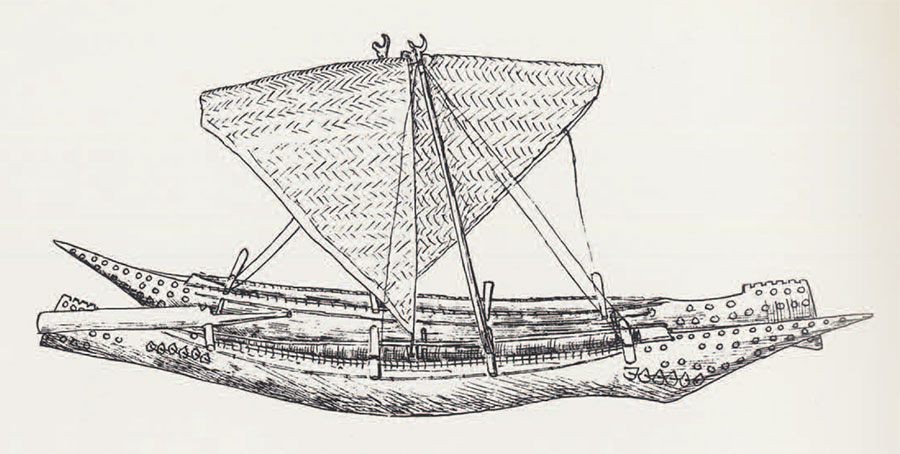
Two hundred years ago it was a common presumption that the Polynesian tribes on the isolated islands in the East Pacific were American Indians, carried there, like all the early Europeans, by the prevailing easterly winds and currents. From the time of Magellan, through the discovery of Polynesia in 1595, until the time of Captain Cook in the latter half of the 18th century, it had been quite impossible for any European ship to force its way from the European colonies in Indonesia to any part of Polynesia. All voyages in the Polynesian part of the ocean, without exception, followed the Humboldt Current and the trade winds from South America westward to Polynesia. To return from there to America, it was necessary to sail on westward, straight to Indonesian waters, and then to take the long curve northward along the coast of Asia to reach America again in the extreme northern latitudes above Hawaii.
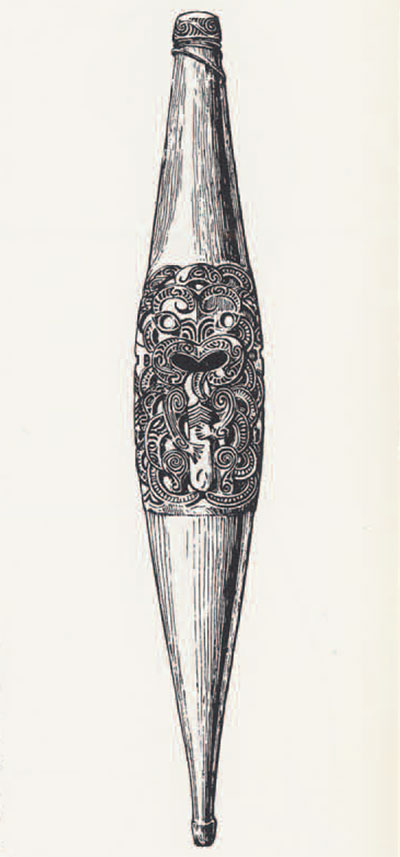
However, at the time of Captain Cook, it was discovered that the Polynesian islanders and the Malay tribes had certain words and linguistic roots in common, and from that moment it was universally accepted that the Polynesian Stone Age tribes had accomplished what no European vessels had managed: an eastward voyage from the Malay domain to Polynesia. This sound linguistic argument was also strongly backed by the observation that the Polynesian islanders possessed pigs, chickens, breadfruit, bananas, sugar cane, yams, taro, as well as outrigger devices on their canoes, all of which were unquestionably Asiatic culture elements, absent and unknown in the Americas.
Ethnographically, the problem of Polynesian origins thus did at first appear to be an easy one. However, as physical anthropologists, archaeologists, and ethnologists began to penetrate deeper into the Polynesian problem in the 19th and 20th centuries, insurmountable obstacles arose. Anthropologists like Wallace, Deniker, and Sullivan pointed out fundamental differences between the Polynesian and the Malay tribes in stature and body build, cranial form, nose form, beard and body hair, and even in hair texture, eyes and pigmentation. More recently blood surveys carried out by the Commonwealth Serum Laboratories in Melbourne have found such fundamental differences in hereditary blood pattern as to exclude the possibility that the Polynesians may be direct descendants of Malay or Southeast Asiatic tribes. Simmons, Graydon, Semple, and Fry, in a joint report of their survey published in the American Journal of Physical Anthropology, December 1955, concluded “that there is a close blood genetic relationship between American Indians and Polynesians, and that no similar relationship is evident when Polynesians are compared with Melanesians, Micronesians, and Indonesians, except in adjacent areas of direct contact.”
Independently, archaeologists and ethnologists, in spite of a concentrated search throughout the Malay area for Polynesian physical and cultural vestiges, failed to encounter any such remains, and revealed instead the existence of fundamental cultural obstacles against a spread of Polynesian culture from the Malay domain. The fact that the very special Polynesian culture pattern was already developed prior to its spread in to the East Pacific is revealed by its comparative homogeneity throughout Polynesia, from Hawaii in the north to New Zealand in the south, and from Samoa to Easter Island. This, too, shows a comparatively recent departure and spread of the far-flung Polynesian tribes, and Polynesian experts have proposed that the last main movement into Polynesia occurred as late as about the 12th century A.D. Yet none of the characteristic Polynesian artifacts appear in Indonesia or on the Micronesian-Melanesian islands separating the two areas, the only possible exception being certain types of stone adzes in the northern Philippines, which, however, were abandoned there and replaced by other tools more than two thousand years before the last Polynesian immigrants. Iron had spread from the Malay peninsula through Borneo and Java by 200 B.C., yet no form of metal was known anywhere in Polynesia.
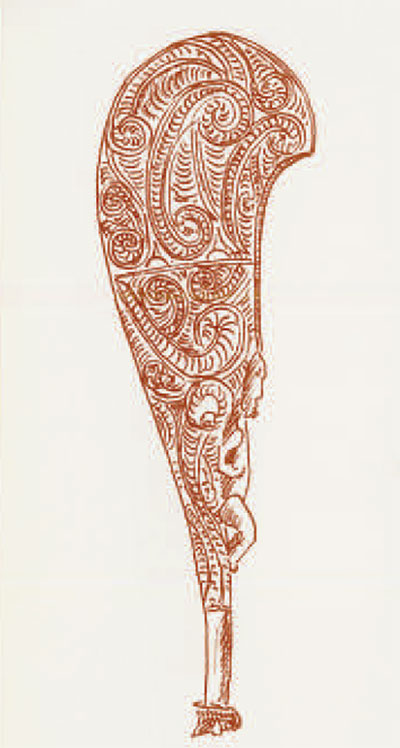
A corresponding problem was the complete ignorance of both pottery making and weaving among all Polynesian tribes, two highly important indicators of cultural diffusion which we somehow shall have to account for one way or the other, since both ceramic art and the loom were widespread culture elements in nearly all circum-Pacific areas, and firmly established in Indonesia since early pre-Christian times. The wheel, of great antiquity and importance in the Old World, was also unknown in Polynesia in spite of the local presence of paved roads. Betel chewing, a deeply rooted cultural characteristic from Indonesia eastward as far as and including Melanesia, disappears abruptly on the frontiers of Polynesia, where the traditional kava-drinking begins, a custom unknown in Indonesia. Palm wine, so old and widespread in Indonesia, was entirely unknown in Polynesia, as was any kind of alcohol prior to its introduction by Europeans. Stringed musical instruments, which had their world evolutionary center and greatest type variety in Asia and Indonesia, were unknown among all the music loving Polynesians. A recent study by Anell (1955) in an effort to localize a Polynesian point of departure in the Malay Archipelago on the basis of a study of fishing implements, failed to find a single trait common to the two areas. Anell concludes that the Polynesian fishing culture cannot have had its origins in the Malay domain, but must belong to a distinct northern fishing culture which in the Pacific area is restricted to Northeast Asia including Japan, North and South America, and the Oceanic islands of Polynesia and Micronesia.
It is thus quite understandable that, when existing theories of Polynesian origins were reviewed by Sullivan in 1923, and by Williamson in 1939, they both concluded that no two of the existing theories were alike, and that a student was left completely at a loss as to the center of origins and migratory route of the Polynesian people. When I carried the same survey up to date in 1952, more than thirty scientists had published more than thirty different and mutually contradictory theories in an effort to bring the young Polynesian tribes out of the Old World. Most of them proposed that two–some said three–different people with different cultures had reached Polynesia independently and at different times. However, the only common guide-post, followed by all, was the Malayo-Polynesian linguistic clue. As a physical relationship between Polynesians and Malays was found inadequate and impossible, and as the linguistic conformity was diffuse and sporadic, with one root appearing here and another there among widely separated Malay tribes, there was room for unlimited speculation; for this, most recent students had turned to the Asiatic mainland. It was quite apparent, for linguistic reasons, that some contact at some time must have existed between Polynesia and Malay parental stocks, but it became increasingly doubtful whether the Polynesian ancestors ever dwelt inside the Malay domain. The Malays, no more than the Polynesians, were autochthonous to their present island habitat. Certainly the Malays had reached their present archipelago through migrations from the nearby mainland coast, and the parental contract between the two may well have antedated this geographic displacement.

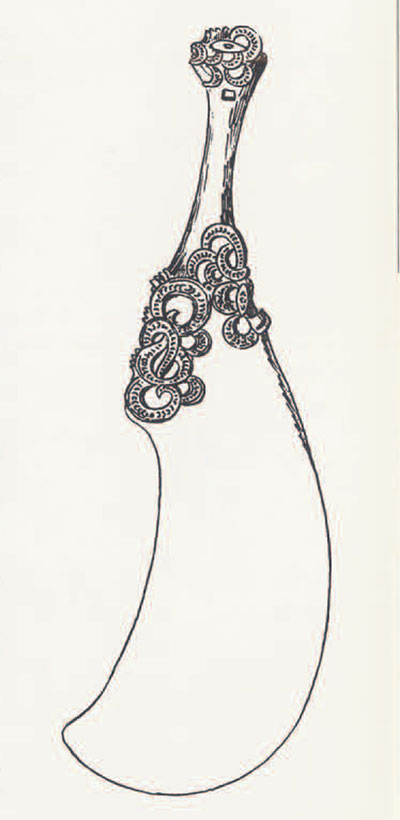
On the basis of the remarkable vagueness and contradictory nature of the Malayo-Polynesian theory, I deemed it desirable to re-examine the value of the outrigger and the much cited domesticated animals and plants as evidence of Polynesian voyages from Indonesia. The result was, at the least, surprising. The prominent Polynesianist and defender of the Malayo-Polynesian theory, Sir Peter Buck, had, as early as 1938, clearly demonstrated that the early settlers of Polynesia reached at their present habitat in the East Pacific ignorant of any of the Indonesian plants in question. He showed that such important Old World food plants as the breadfruit, banana, yam, and the finer taro had not been brought eastward from Indonesia by Polynesians at all, but had been relayed or carried along by the old intermittent Melanesian migrations from Indonesia and New Guinea as far as their own eastern outpost of Fiji. In Fiji these originally Indonesian plants were subsequently picked up by Polynesian visitors from the east, who, according to Buck’s thesis, had arrived by way of the atolls of Micronesia where all these plants were unknown. Precisely the same was the case with the Old World pig and chicken, which admittedly were entirely unknown to the original settlers of Polynesia, until they, according to Buck, were fetched by visitors to Fiji in traditionally recorded times. This will also explain the curious absence of these important animals from all the numerous Maori tribes who had first settled New Zealand at different times from Polynesia proper, but who had isolated themselves from the rest of the islands in the 14th century before the pig and chicken were known there. The fact that all the Maori tribes, as well as the Morioris on Chatham Island, isolated themselves from their parental stocks in Nuclear Polynesia at an early time, whereas the rest of the Polynesian tribes continued inter-island trade and contact right up to the time of European discovery, leaves the Maori and the Moriori as the only examples of the pure pre-14th Polynesian culture. It is also remarkable that the invention of the important outrigger was unknown to all the Maori and Moriori tribes at the arrival of the Europeans. The rest of Polynesia, when acquiring the pig, chicken, and Melanesian cultivated plants from adjacent Fiji, universally adopted also the genial device of outrigger attachment to stabilize their plank canoes. It is noteworthy that it was the Melanesian type of single outrigger which they adopted and that the two-sided, or double outrigger, in use throughout Indonesia, never reached Polynesia.
Thus, upon critical examination, the few arguments from the material culture which had been used to bolster the linguistic evidence of Polynesian origins in Indonesia prove to be unfounded and deceptive, and they may instead be turned around and added to the rest of the negative evidence when we ask: How could the original immigrants to Polynesia have come from Indonesia, or even crossed the Melanesian buffer territory, and still remained ignorant of the single and double outrigger, the pig and the chicken?
Another remarkable fact now established by linguists and archaeologists is that all traces of Polynesian settlements inside Melanesia and Micronesia are of late Polynesian arrivals westward from Polynesia proper, rather than eastward from Indonesia. It is pertinent to ask: How could open neolithic boats from Indonesia outdo European ships until the 18th century by forcing their way against prevailing winds and currents through four thousand miles of enemy occupied territory of Micronesia or Australo-Melanesia, and even without leaving any traces en route? The late prominent navigator, de Bisschop, tried in vain for three years to press an Asiatic junk eastward to duplicate an early Indonesian migration to Polynesia, but he was constantly pushed back short of Micronesia and finally gave up, arguing with good reason that such a primary migration was not feasible.
What does actually happen to a primitive craft if it enters the uncharted ocean of the Philippine Sea to search for unknown land? It is immediately trapped by the Japan Current and carried toward Northwest America by a route north of Hawaii; from the Canada-Alaska coast the natural drift bears directly down upon Hawaii. This we know well from the great many drift voyagers brought by the Japan current to Northwest America in modern times, and by the fact that the natives of Hawaii at the time of European discoveries made some of their largest canoes of drift timber from the Northwest American coast.

A primitive voyage of primary discovery from Indonesia to Polynesia is only possible with the natural curve of the elements across the extreme North Pacific and thence down upon Hawaii. If we accept this undeniable practical fact, our problems immediately begin to disappear. The navigational obstacle is ruled out. The four thousand mile deep, hostile areas of Micronesia and Melanesia are circumnavigated, and only secondarily entered at a later date and from the opposite side. With the Northwest Coast archipelago as a stepping-stone, the absence of pottery among the Polynesian tribes becomes quite logical, as the entire Northwest Coast remained ignorant of pottery until the time of European arrivals, in contrast to nearly all other circum-Pacific lands. The coastal tribes in this extreme North Pacific island area, instead of pottery, used the stone-lined earth oven, precisely as it reappears among all Polynesian tribes. The absence of the loom in Polynesia also becomes quite logical, for the same Northwest Coast island area was one of the rare circum-Pacific localities where the loom was unknown until historic times. Lacking the loom, the local coast dwellers carved grooved bark beaters of wood and whale-bone, identical to those used throughout Polynesia, and made their garments by beating the soaked inner bark of certain trees. The cloaks made by the New Zealand Maori, who never obtained the tropic tapa-yielding trees, were so much like the bark cloaks of the Northwest Coast Indians that trained observers have found it necessary to make a close inspection to distinguish them. The vast chronological gap between the Neolithic Age in Indonesia and Polynesia, is easily spanned with a stepping-stone on the Northwest Coast where the culture remained neolithic until European times; and where the basic tool, as in all Polynesia, was an adze rather than an axe, hafted upon the identical type of elbow-handle in both areas. One of the most specialized adze blades in Polynesia reappears archaeologically on the Northwest American coast. Here too we find, deeply rooted in archaeology, the other specialized Polynesian artifacts which were entirely missing in Southeast Asia, the peculiar bell-shaped, D-shaped, and T-shaped stone pounders, which had started their local evolution as pestles, and all the equally specialized polished stone and whale-bone clubs of the patu and mere type. The bow and arrow was disregarded as a fighting weapon, as in Polynesia. In both areas drums, rattles, and wind instruments made up for the conspicuous absence of stringed instruments, while some of the carved anthropomorphic flageolets among the Maori and Northwest Coast tribes are like enough to appear as imitations. The large wooden canoes upon which the Northwest Coast tribes based their purely maritime culture could carry upwards of a hundred men, and early voyagers commented upon their remarkable similarity to the Maori war canoe. As in Polynesia, the Northwest Coast canoe was occasionally converted to a double canoe by tying two together and covering them with a plank deck, when deep sea voyaging was undertaken. The similarity of these craft goes beyond details of construction–form and dimensions, mutual sewing of side planks, and separate bow and stern pieces with heads raised on swans’ necks; it includes the attitude towards them–such details as the habit among some Maori and Northwest Coast tribes of turning their war canoes around shortly before landing, as only the gods were supposed to land bow first.
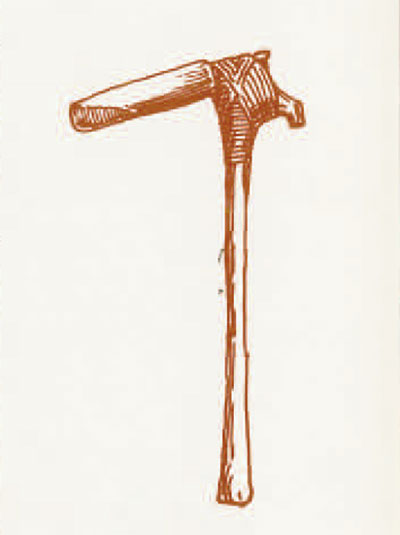
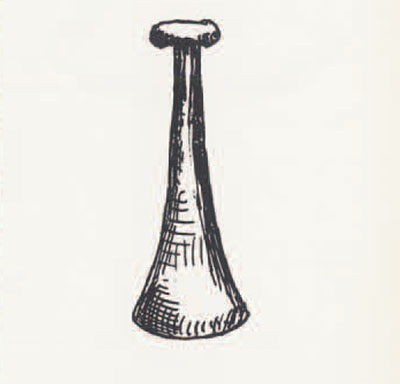
All these seemingly unwarranted but compelling parallels and identities between the coastal archipelago of Northwest America and outlying Polynesia have with regular intervals been pointed out by early voyagers and modern anthropologists, together with many other striking analogies, ranging from the unique type of composite wooden fish hook to the carved wooden posts and gabled plank houses with entrance through the straddled legs of a totem pole. Dizon pointed out that Cook, Vancouver, and other early voyagers familiar with both areas were much struck by the cultural similarities between these two Pacific regions. It is worthy of note that the same voyagers who detected the linguistic affinity between Polynesia and Indonesia found all the correspondences in material culture centered on the Northwest American coast. The correspondences in social systems, customs, and beliefs are at least equally striking, and have repeatedly been pointed out in the literature.
In calling attention to this North Pacific archipelago above Hawaii as a perfectly logical stepping-stone from East Asia to Polynesia, I do not at all propose a new origin for the last arriving Polynesian immigrants, only a new route, and the linguistic origins remain unchallenged. There has never been presented any linguistic evidence tying Polynesian migrants to either the Melanesian or Micronesian route. Linguistically, one geographic stepping-stone is as feasible as the other. There appears to be no direct evidence for a passage of proto-Malay speech through the Northwest Coast archipelago. But this may be due to the fact that, as opposed to the isolated Polynesian tribes in Oceania, the tribes of the continental Northwest American archipelago have drastically developed and altered their own speech since their settling of the local coast upon their arrival from Asia. This can be proven by the fact that the Kwakiutl, Haida, Salish, Tsimshian, Tlingit, and Nootka all speak mutually different languages, in spite of a close unity in both race and culture. Probably because of this deceptive discrepancy, no serious effort has been made by modern scholars to search for a root relationship between the Northwest Coast languages and that of either Malay or Polynesian tribes. An effort was actually made by Campbell in the late nineties, and his conclusion was that the Haida language of the Queen Charlotte Islands, as much as the Polynesian, should be included in the Oceanic family, and he postulated that the Haida speech must have derived from early immigrants from the South Seas. About the turn of the century, Hill-Tout presented a linguistic study entitled “Oceanic Origin of the Kwakiutl-Nootka and Salish Stocks of British Columbia…” He argued that the now different languages of these Northwest Coast tribes seemed to be distorted remains of an early common language that had been directly related to the present Polynesian tongue. His study deserves attention, and the whole problem ought to be seriously investigated.
The next, and perhaps the principal, question is whether there is genetic evidence for the Northwest Coast tribes being a feasible missing link between the physically diverging Indonesian and Polynesian tribes. This can again be answered in the affirmative, In stature, body build, head form, nose form, hair texture, beard and body hair, and pigmentation, where the Polynesians differed drastically from the Indonesian people, they concur remarkably with the distinguishing characteristics of the Haida and Kwakiutl of the south-central archipelago for the Northwest Coast. Of quite recent years, the blood factors have added the strongest argument in favor of genetic relationship between Polynesia and Northwest America, both of which areas concur, in contrast to Indonesia, with an almost complete absence of the dominant Indonesian B factor, a high O, and a surprisingly high A. The lack of the B factor would indicate that the mutual Malay-Northwest Coast Indian-Polynesian spreading center was in a somewhat northerly area of coastal East Asia, and that the Malays inherited the dominant B gene after reaching their present domain. In his paper on “Blood Groups and the Polynesians,” the prominent Australian authority, Dr. J.J. Graydon (1952) put the Polynesian-Northwest Coast Indian relationship which I have proposed to a further test by including other blood factors in the survey. He reported discovering that also in other respects the blood patterns of these two adjacent people were “strikingly similar,” and that “both are remarkably unlike” the blood pattern of Indonesia and Micronesia. He concluded: “It is submitted that the serological evidence presented in this paper supports a Polynesian-Amerind relationship, making it more probable that the islands of Polynesia have been settled largely by migrations from continental America.” Later the noted British serologist, Mourant (1954) in his monograph on “the Distribution of Human Blood Groups,” took up the same problem, and concluded: “Observations on the ABO, MNS and Rh blood group systems are therefore all consistent with the theory of Heyerdahl.” I may add as a curiosity that, having spent several months among Bella Coola-Salish and Kwakiutl Indians after a year in southeast Polynesia, I was struck by the physical similarity which in the Bella Coola area frequently took the form of resemblance to individual persons I had known on the islands.
To summarize, I propose that the East Asiatic element in the Polynesian race and culture entered Polynesia at Hawaii, and with the Northwest Coast area as a logical, feasible, and necessary stepping-stone.
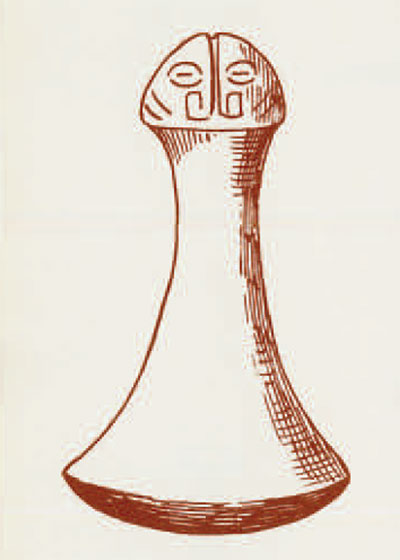
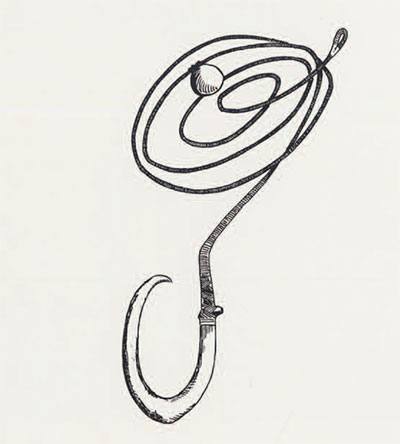
However, neither Indonesia nor Northwest America alone or combined will satisfy to explain the complete picture of Polynesia island culture. Most anthropologists agree that the Polynesian race and culture is composite of two–some claim three–elements. There is ample evidence of a racial and cultural sub-stratum throughout most of Polynesia, and most notably on Easter Island, the lonely outpost nearest Peru. My second postulation is that the ancestors of the present Polynesian stock, upon reaching Polynesia in the beginning of our millennium, were not the true discoverers of these islands, but were preceded by islanders of Andean origin. These former inhabitants were responsible for the fitted megalithic masonry and for the anthropomorphic stone statues raised on the marginal islands nearest America, for the original introduction of the Maori Polynesian dog, for the spread to Polynesia of the 26-chromosome cultivated American cotton, together with the sweet potato, the gourd, and several other American elements in the Polynesian flora, including the important sweet-water totora of the Easter Islanders, and the chili pepper found locally by the arriving Europeans. Numerous elements in the Polynesian culture are borrowed from the proto-Polynesian stratum, which even affected marginal Melanesia. The art and custom of trepanning, unknown throughout South and East Asia, is one valid example, the ceremonial drinking of Kawa, a salivary ferment, is another, with a continuous distribution from Central and South America through Polynesia, until it ends abruptly in the marginal area to the west where the custom of betel chewing comes in from Asia. The sling as a fighting weapon is unknown in Indonesia, and yet the three specialized South Sea types, the band sling, the pocket sling, and the slit sling, are a direct repetition of the three Peruvian types. Mummification was unknown in Indonesia, but in spite of the unfavorable climatic conditions it was practiced in Polynesia with a method corresponding to that used in Peru. Feather cloaks and mantles for distinguished persons, characteristic of far-flung Polynesian culture, were unknown throughout the Old World, but characteristic of New World cultures, including archaeological Peru. The special single and composite fish hooks of Polynesia, none of which are known in Indonesia, appear sporadically in archaeological middens from Ecuador down to northern Chile. The complicated Polynesian kipona, or elaborate mnemonic system of knotted strings, cannot be compared to the single string with knots for recording a number as occasionally found throughout the world, but is a direct repetition of the Peruvian quipu.
Many more examples from the material and social cultures as well as the mythology of the two areas could be included. It will suffice here to add that, although the final immigrants to Polynesia came from an area where the earth oven and the bark beater took the place of pottery and loom, their predecessors on the islands cannot have been ignorant of these arts. It is known today that a pottery-making culture actually did exist at one time in Polynesia. Small fragments of different red wares have been encountered archaeologically in both the eastern and western extremities of Polynesia, with the earliest date so far from the Marquesas group. In the same group, and also elsewhere in Polynesia as far west as Fiji, the American 26-chromosome cultivated cotton grows wild, unused and superfluous to the present Polynesian islanders, but certainly brought to the islands for some purpose by the people who undertook the original migration.
